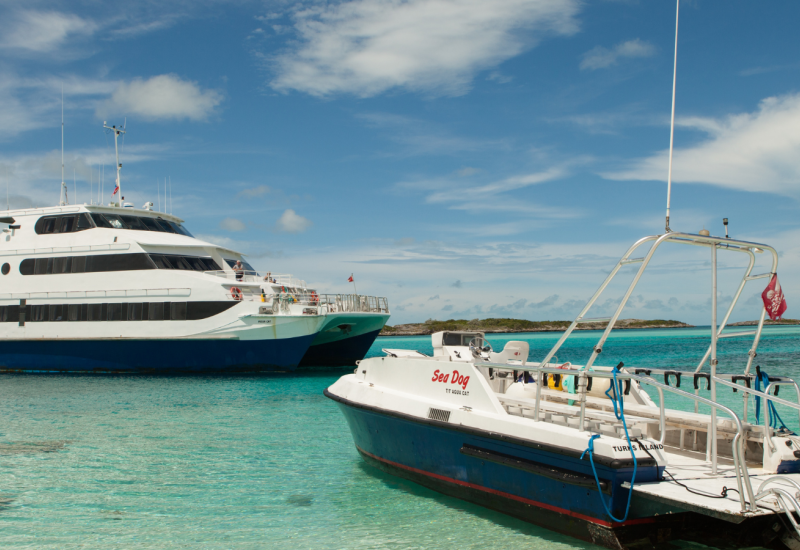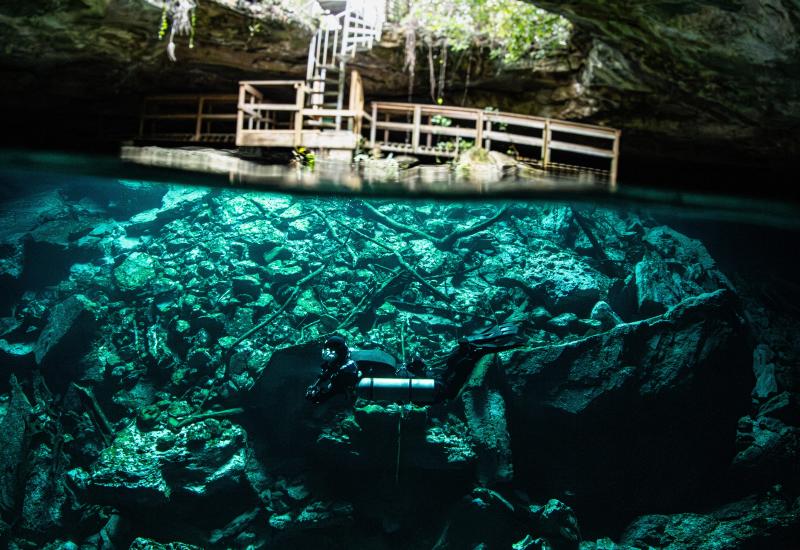The Secret World of Eleuthera's Ponds

Shane GrossSeeing three lined seahorses so close is rare — even at Sweetings Pond, site of the highest known density of seahorses on Earth.
Queens Road stretches the entire length of the long, skinny Bahamian Out Island of Eleuthera. Palm trees line the way for portions of the 110-mile stretch, while craggy rocks separate the road from the Atlantic Ocean for others.
But along that route, the island hides 200 inland ponds and blue holes. These oft-ignored bodies of water host some of the most uncommon marine ecosystems in the world, but that won’t last for long if they continue to go unprotected. In many of the ponds, visibility is limited, and it’s easy to see they have been used as dumping grounds — old refrigerators and car parts protrude from the surface. Other ponds and blue holes, however, are home to crystal-clear water and amazing densities of unique marine life.
The ponds and blue holes formed as the sea level rose and fell over hundreds of thousands of years. When the sea level was high, reefs formed, and as it lowered, the reefs became islands. But like most reefs, they were full of holes, caves, cracks and crevasses. All the ponds are connected to the ocean through small tunnels — much too tight for a scuba diver — but the ponds do rise and fall with the tides. And, in some places, you can see water being sucked out or boiling in the openings.
One pond has the highest known density of seahorses on Earth. They have been cut off from the ocean for so long, they are morphologically distinct from those of the same species found in the ocean. It wasn’t until 2016 that researchers found out they are Hippocampus erectus, lined seahorses. Just imagine what this pond could teach us about evolution.
One ultraclear blue hole is home to lucifuga, an almost-blind, eellike cave fish. Some ponds have so many yet-to-be-described red cave shrimp that you can’t find a square foot of seabed without one.

Shane GrossClockwise, from top left: Due to their regenerative claws, crabs provide a sustainable fishery; yet-to-be-described cave shrimp en masse; a researcher tags a seahorse at Sweetings Pond; cave diving on Eleuthera has grown in popularity.
One fisherman, decades ago, began transporting sea turtles from the ocean and putting them into “his” pond. They have recently been seen mating and laying eggs at the edge of the pond. Residents filled the famed Ocean Hole with snapper, porkfish, blue tangs and other tropical fish, and now the fish don’t even look like the ones in the ocean. They ate all the natural prey and now depend on humans for much of their diet. Legend has it the Ocean Hole was explored by none other than Jacques Cousteau, and he couldn’t find the bottom, even with a submersible. None of the ponds or blue holes enjoys any protection today. There are scientists and conservation organizations working to change that, but it’s not easy.
Right now, the Bahamas government is looking to protect 20 percent of Bahamian waters by 2020 — a wonderful goal, but how do the ponds and blue holes fit in? Maybe they don’t, and that could lead to more ponds being lost to development and invasive species or being turned into dumping grounds.










